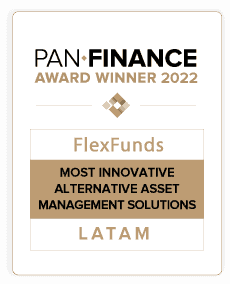Deciding which type of vehicle suits investment needs depends mainly on risk tolerance, and potential returns, among others. Structured notes are born to adapt these elements to specific investment needs. In addition, they ensure that certain investments acquire the appropriate levels of reliability, liquidity, and accessibility.
What are structured notes?
A structured note is a hybrid product. That is, it combines features of multiple types of financial products into one.
These notes can be described as debt securities, such as corporate bonds and debentures. However, unlike fixed-income securities, they can offer a variable return because they are marketable securities based on other underlying assets, as are financial derivatives.
Despite incorporating elements typical of derivatives, they are still debt securities, and, as such, they have a fixed maturity.
The underlying assets can be of various types, from a portfolio of shares or liquid securities to real estate and alternative assets, not to mention interest rates or exchange rates in the foreign exchange market.
In this way, the product obtained is mixed and fully customizable.
What about the profitability and risk of this type of security? In reality, these two elements can be managed without forgetting that the underlying assets backing the issue are strongly linked.
In the case of structured notes where the capital is not guaranteed, the risk-return ratio is conditional on the assets’ quality and the portfolio manager’s capabilities, in charge of executing the strategy.
In summary, a structured note combines elements of negotiable debt securities and financial derivatives. The 4 characteristics of these notes are:
- A specific maturity.
- Possibility of being issued on practically any type of underlying asset.
- Profitability is obtained through payment at maturity.
- The risk is linked to the loss of value of the underlying asset or portfolio of assets.
What are the advantages and disadvantages of a structured note?
As is well known, there is no such thing as a perfect financial product. However, the family of structured notes pursues the objective of adapting the investment strategy to specific needs.
To be more precise, the advantages of structured notes can be summarized as follows:
- Flexibility: The versatility of structured notes allows for implementation of a wide range of assets and investment strategies. In this way, selecting and allocating the assets that make up the portfolio will influence the risk-return relationship.
- Transparency: the conditions of the issuance are clearly and precisely displayed. The investor has all the information he needs.
- Diversification: structured products are an alternative to traditional investment. In many cases, they are a way to diversify the portfolio. Moreover, given their high versatility, it is possible to find the right structured note to complement any portfolio.
- Liquidity: as they are negotiable securities, the investment consists of a simple purchase and sale (through an authorized intermediary) and deposit in a custodian bank. Investors enjoy simple access to subscriptions, and the strategy increases distribution capacity. Unwinding the investment is as simple as selling the notes. However, it may also depend on the issuance conditions.
On the other hand, we can mention as a disadvantage that structured notes are complex products; linked to other assets.
Why are structured notes used as investment vehicles?
Using structured products as investment vehicles provides a possible system to regulate risk exposure, making it possible to adapt it to a given investor profile. All this while maintaining return target.
An investment vehicle is simply a mechanism by which investors obtain returns. In other words, it must meet specific investment needs, for which it may be convenient to implement the strategy in a synthetic product.
Structured notes differ from derivatives in that a portion may invest in fixed income; therefore, the possibilities for gains and losses are more diversified in these cases. As mentioned above, they are a hybrid investment instrument and allow the design of a tailor-made strategy (it is possible to design notes with guaranteed capital).
In addition to the fact that structured notes favor the optimization of the risk/return trade-off, they become relevant in times of uncertainty and adverse market conditions. They may encompass many assets, making it possible to build a strategy suitable for all types of market situations and scenarios. Absolute return structures can even exist.
On the other hand, a structured note facilitates access to specific markets or financial assets that do not have sufficient transparency, liquidity, or accessibility.
Due to its advantages, even the financial firm JP Morgan launched a vehicle based on structured notes to invest in companies exposed to cryptocurrencies.
At FlexFunds we are specialists in the design and issuance of investment vehicles through exchange-listed products (ETPs). Thanks to the characteristics of instruments such as structured notes, we can offer innovative and fully customized solutions.
You can contact one of our experts if you have an investment strategy and need an efficient investment vehicle to distribute it.
Sources:
- https://blog.monex.com.mx/instrumentos-financieros/beneficios-de-las-notas-estructuradas
- https://es.bitcoinethereumnews.com/finance/jpmorgan-launching-new-way-to-invest-in-companies-with-exposure-to-cryptocurrency/







